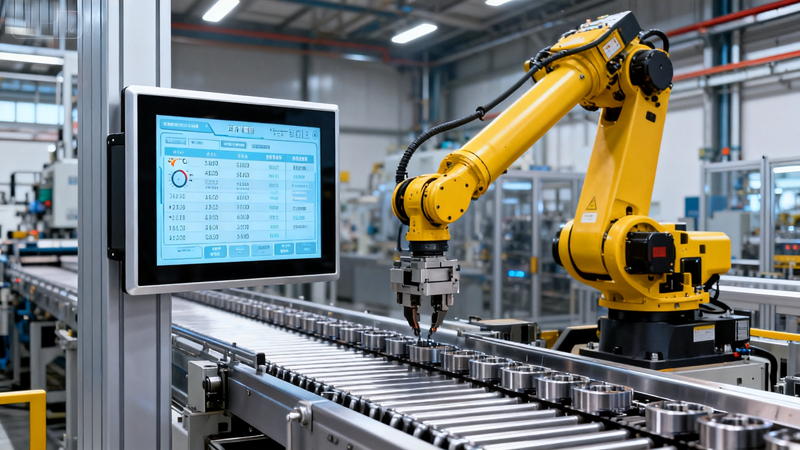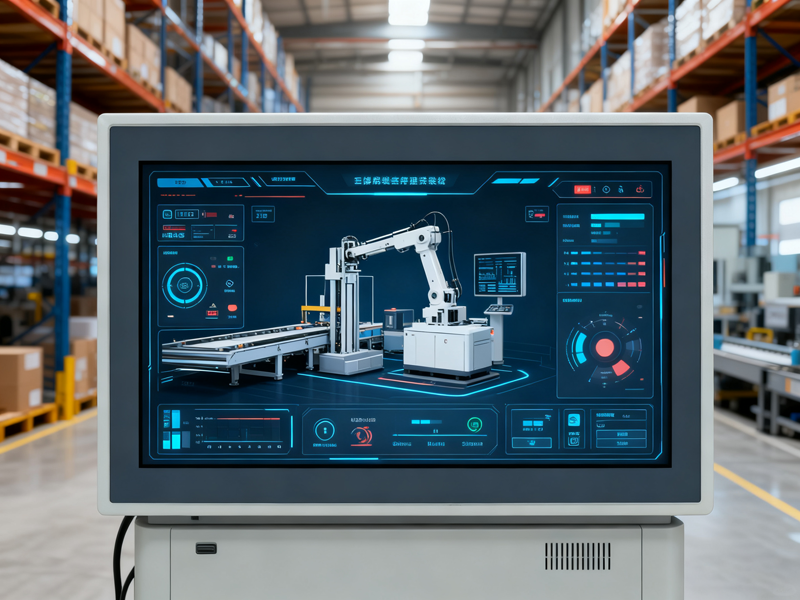Choosing the right monitor for your operations can significantly impact productivity and system reliability. Industrial grade and consumer grade monitors look similar at first glance, but they are built for very different environments. Selecting the wrong type may lead to frequent failures, costly downtime, and reduced efficiency. This article explains the key differences, advantages, and limitations of each type to help you make a well-informed decision.
What Is an Industrial Grade Monitor?
An industrial grade monitor is specifically designed for demanding environments where reliability and durability are critical. These monitors are used in factories, warehouses, public transportation, medical equipment, control rooms, kiosks, and outdoor digital signage.
Pros and Cons of Industrial Grade Monitors
Pros:
- Durability and Reliability: Industrial monitors are built to survive harsh conditions like extreme temperatures, dust, vibrations, and even accidental spills.
- Extended Lifespan: Many models are rated for 50,000 to 70,000 hours of operation, significantly longer than consumer counterparts.
- Specialized Features: Options include high brightness panels, sunlight-readable displays, touch screen interfaces with multi-touch support, and customizable mounting options.
- Continuous Operation: These monitors can run 24/7 without performance degradation, which is essential in control rooms or automated production lines.
Cons:
- Higher Cost: Industrial monitors are more expensive due to robust design, certification, and quality control.
- Limited Aesthetic Variety: Unlike consumer models, industrial monitors focus on functionality rather than sleek design.
- Complex Configuration: Integrating an industrial monitor may require specialized knowledge, especially when combining with PLCs or SCADA systems.
What Is a Consumer Grade Monitor?
Consumer grade monitors are designed for everyday personal or office use. They often emphasize high resolution, and multimedia features like HDR and gaming refresh rates. Typical use cases include office desktops, gaming setups, personal entertainment, and light professional work like graphic design or software development.
Pros and Cons of Consumer Grade Monitors
Pros:
- Cost-Effective: They are widely affordable and suitable for standard office or home environments.
- High-Resolution Options: Many models offer 4K displays, vibrant colors, and high refresh rates for multimedia applications.
- Design Variety: Sleek, slim bezels and modern aesthetics cater to personal and corporate environments.
- Easy Setup: Plug-and-play connectivity with standard PCs and laptops is straightforward and user-friendly.
Cons:
- Limited Durability: Susceptible to dust, moisture, temperature fluctuations, and rough handling.
- Shorter Lifespan: Intensive or continuous use may lead to faster performance degradation.
- Fewer Industrial Features: Lack of anti-glare coatings, sunlight readability, IP protection, or reinforced touch technology.
- Not Suitable for Harsh Environments: High vibration areas, outdoor operations, or heavy-duty industrial processes can easily damage consumer monitors.
Core Differences Between Industrial Grade Monitors and Consumer Grade Monitors
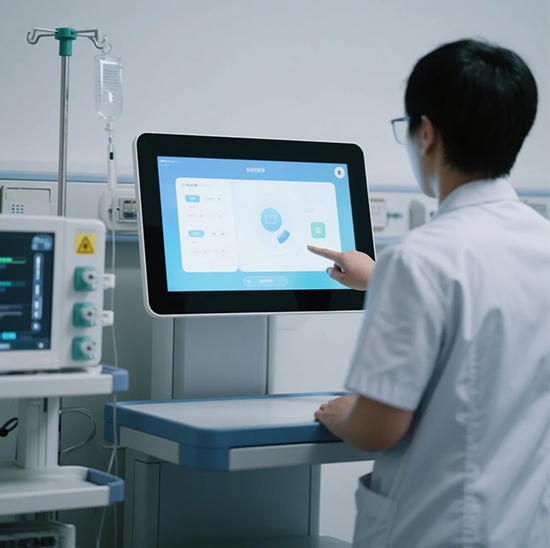
Here is a roundup for your quick reference:
| Feature / Parameter | Industrial Grade Monitor | Consumer Grade Monitor | Notes / Reference |
| Screen Size | 15–24 inch typical | 21–27 inch common | Industrial monitors often have compact sizes for integration |
| Panel Type | IPS / TFT | IPS / TN / VA | IPS preferred for wide viewing angle and color stability |
| Resolution | 1080p (Full HD) standard | 1080p / 4K common | Industrial rarely emphasizes ultra-high resolution unless for design work |
| Housing Material | Aluminum alloy or stainless steel | Plastic | Provides durability and impact resistance |
| Front Panel Protection | IP65 (dust & water resistant) | None / Minimal | Industrial monitors can be cleaned with water |
| Shock & Vibration | IEC 60068-2-27 (shock), IEC 60068-2-6 (vibration) | Not certified | Critical for factory floors or mobile machinery |
| Operating Temperature | -20°C to +70°C | 0°C to +35°C | Wide temperature range allows harsh environment use |
| Storage Temperature | -30°C to +80°C | 0°C to +50°C | Consumer displays not rated for extreme conditions |
| Brightness | ≥400 nits indoor, ≥1000 nits outdoor | 250–350 nits | High brightness needed for sunlight readability |
| Contrast Ratio | 800:1 – 1000:1 typical | 700:1 – 1000:1 | Slightly lower emphasis in consumer displays |
| Viewing Angle | 170° H / 160° V | 160° H / 160° V | Industrial monitors often maintain color stability at angle |
| Touch Type | Projected Capacitive or Resistive | Capacitive (finger only) | Industrial supports gloves & wet-hand operation |
| Touch Points | 5–10 multi-touch | 2–5 multi-touch | Industrial multi-touch optimized for control systems |
| Operating Hours | 24/7 continuous | 8–10 hours/day | Designed for round-the-clock production use |
| Lifespan / MTBF | 50,000–70,000 hours | 20,000–40,000 hours | Longer lifespan reduces replacement frequency |
| Input Interfaces | HDMI, DisplayPort, VGA, RS232, RS485, GPIO | HDMI, DisplayPort, USB-C | Industrial interfaces include legacy and control signals |
| Voltage Range | 9–36V DC wide range | 110–240V AC standard | Industrial systems often require DC power |
| Mounting Options | VESA, Panel mount, Rack mount | Stand mount, limited VESA | Industrial flexibility for embedded systems |
| Price (USD) | $1,000–$1,500 typical | $200–$350 typical | Reflects ruggedness and certification costs |
| Maintenance / Replacement | Low, minimal downtime | High if used in harsh environments | Consumer screens fail faster under industrial stress |
Design and Structure
Industrial monitors feature robust metal housings like aluminum alloy and stainless steel, reinforced front panels, and anti-glare coatings. Many models meet IP65 standards for dust and water resistance, making them suitable for harsh environments. In contrast, consumer monitors are mainly plastic-based, with minimal protection against dust or spills, focusing more on aesthetics than durability.
Durability and Reliability
Industrial monitors are engineered to withstand vibrations and shocks in line with IEC 60068-2-6 (vibration) and IEC 60068-2-27 (shock) standards. They often operate reliably between -20°C and +70°C, with MTBF (Mean Time Between Failure) ratings exceeding 50,000 hours. Consumer monitors typically operate in 0°C to 35°C with no certified vibration resistance.
Operating Hours and Lifespan
Industrial monitors are designed for continuous 24/7 operation, ensuring stable performance in production lines, control rooms, or outdoor kiosks. Their long lifespan, often 50,000–70,000 hours, reduces downtime and maintenance costs. Consumer monitors are intended for limited daily use, usually 8–10 hours per day, with a total operational lifespan of 20,000–40,000 hours, making them unsuitable for industrial-grade continuous operation.
Brightness and Visibility
For indoor industrial applications, brightness levels start at ≥400 nits, while outdoor monitors require ≥1000 nits for sunlight readability. Consumer monitors usually offer 250–350 nits, making them unsuitable for bright or outdoor environments.
Installation and Interfaces
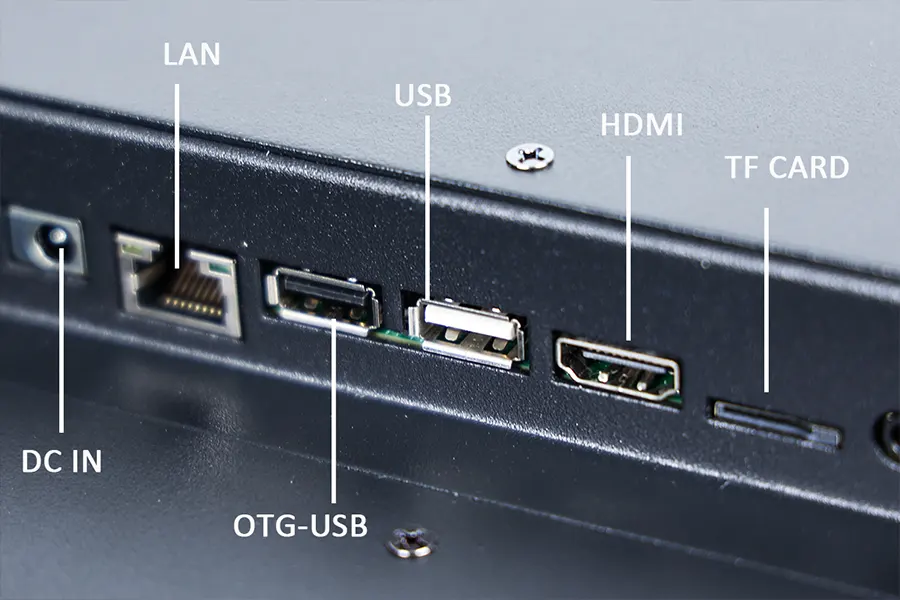
Industrial monitors support flexible mounting options including VESA, open frame, embed, or rack mount. They also provide multiple industrial interfaces such as HDMI, DisplayPort, VGA, RS232/RS485, and sometimes GPIO. Consumer monitors mainly offer HDMI, DisplayPort, or USB-C, with limited mounting flexibility.
Touch and Input Options
Industrial touch screens often use projected capacitive or resistive technology that supports gloved or wet-hand operation. Consumer touch screens rarely support gloves and are prone to performance loss under moisture.
Cost
Assumptions:
- Usage period: 5 years
- Consumer monitor price: $300
- Industrial monitor price: $1,200
- Consumer monitor lifespan: ~1.5–2 years in industrial conditions
- Downtime loss per failure: $1,000
Total Cost for Consumer Monitor:
Total Cost = (Consumer Monitor Price × Number of Replacements) + (Downtime Loss per Failure × Number of Failure
Example:
Total Cost=($300×3)+($1000×1)=$1,900
Total Cost for Industrial Monitor:
Total Cost=Industrial Monitor Price+Minimal Downtime Costs
Example:
Total Cost=$1,200+$0≈$1,200
This clearly shows that, despite higher upfront cost, industrial monitors are more cost-effective in demanding environments.
Choosing the Right Monitor for Your Environment
Selecting the right monitor depends largely on your operational environment, usage intensity, and application requirements. Here are some key considerations:
- Environment: If the monitor will be exposed to dust, humidity, extreme temperatures, or vibrations, industrial grade is essential. For office or home environments, consumer monitors are sufficient.
- Usage Hours: Continuous operation for 24/7 monitoring demands industrial grade. Consumer monitors are suited for 8–10 hours of daily use.
- Touch Capability: Industrial touch screens offer precision even with gloves or moisture, which is vital in factories or medical facilities. Consumer touch monitors may struggle under these conditions.
- Longevity vs Budget: Consider total cost of ownership. Industrial monitors are more expensive upfront but last longer, while consumer monitors may require more frequent replacements.
- Compliance and Certification: Industrial monitors may meet certifications such as CE, UL, or IP ratings, ensuring safety and reliability in regulated environments.
Consider TouchWo for Reliable Industrial Monitors
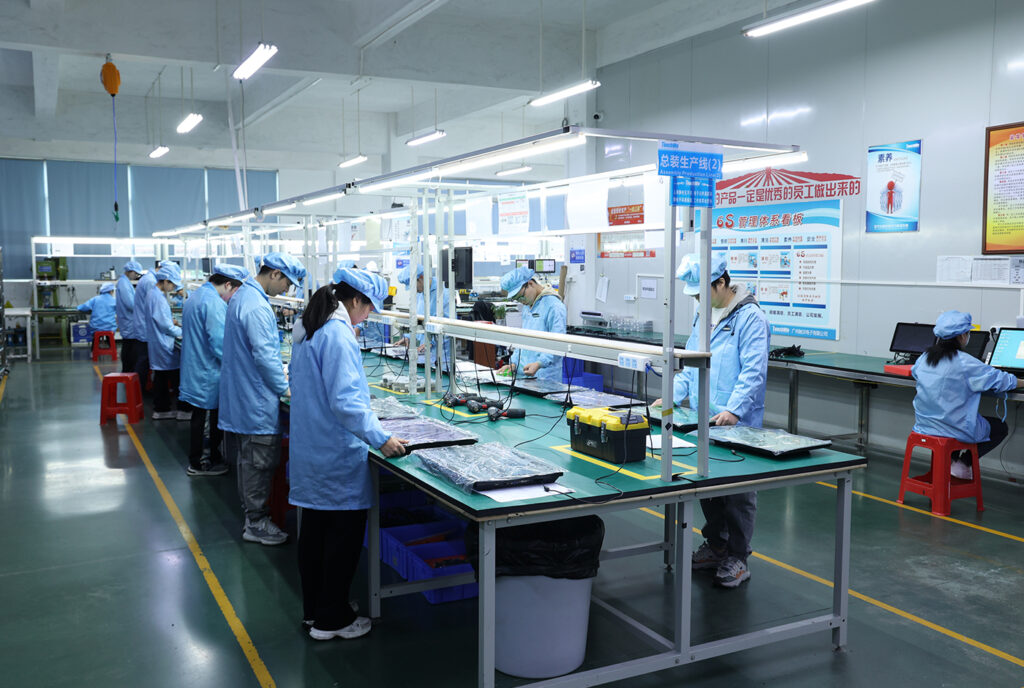
Since 2009, TouchWo has focused on delivering high-quality industrial touch screens and touch computers across industries like industrial automation, healthcare, hospitality, and self-service. Our one-stop solutions cover both OEM and ODM services, allowing you to customize devices to your operational needs. We boast a strong manufacturing capability, producing up to 200,000 units annually, enough to meet large-scale industrial demand while maintaining high standards of reliability and durability. Partner with us to equip your operations with reliable, high-performance industrial touch solutions.


